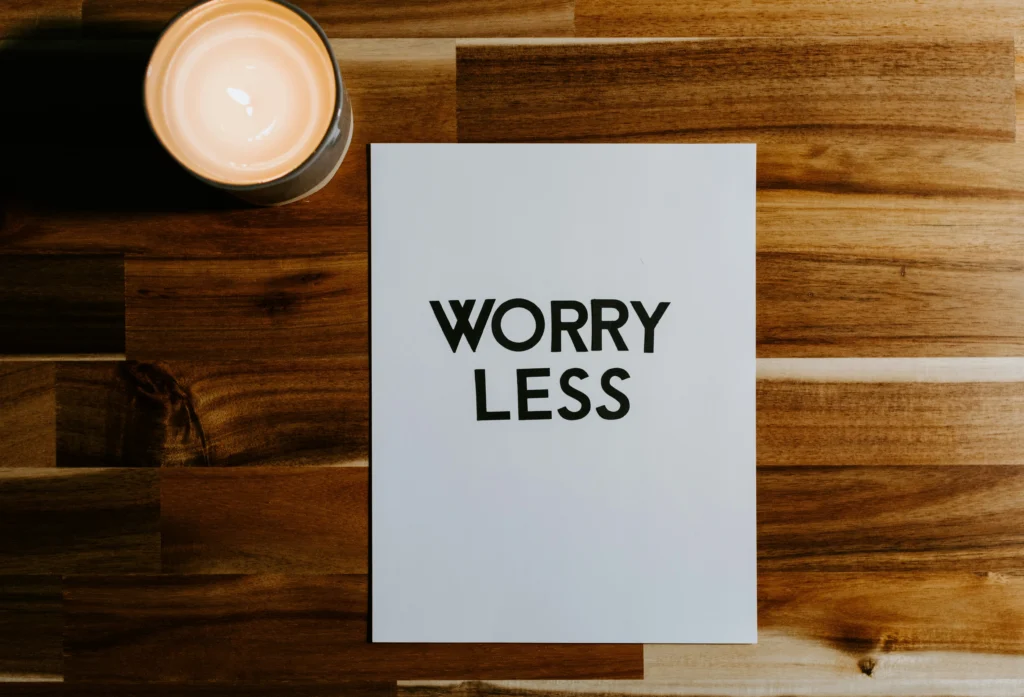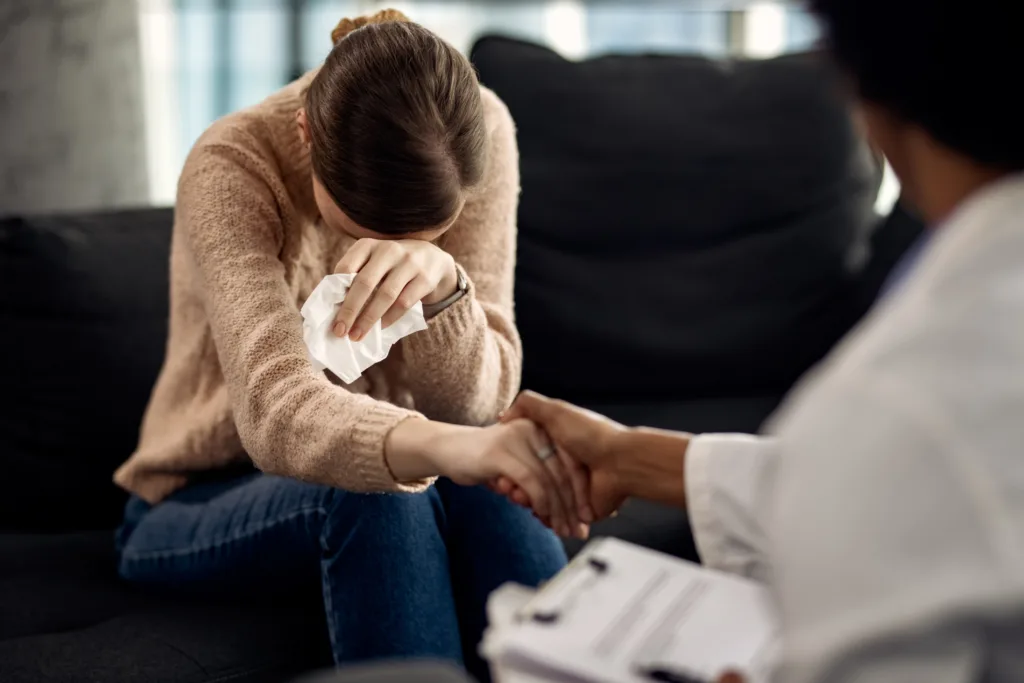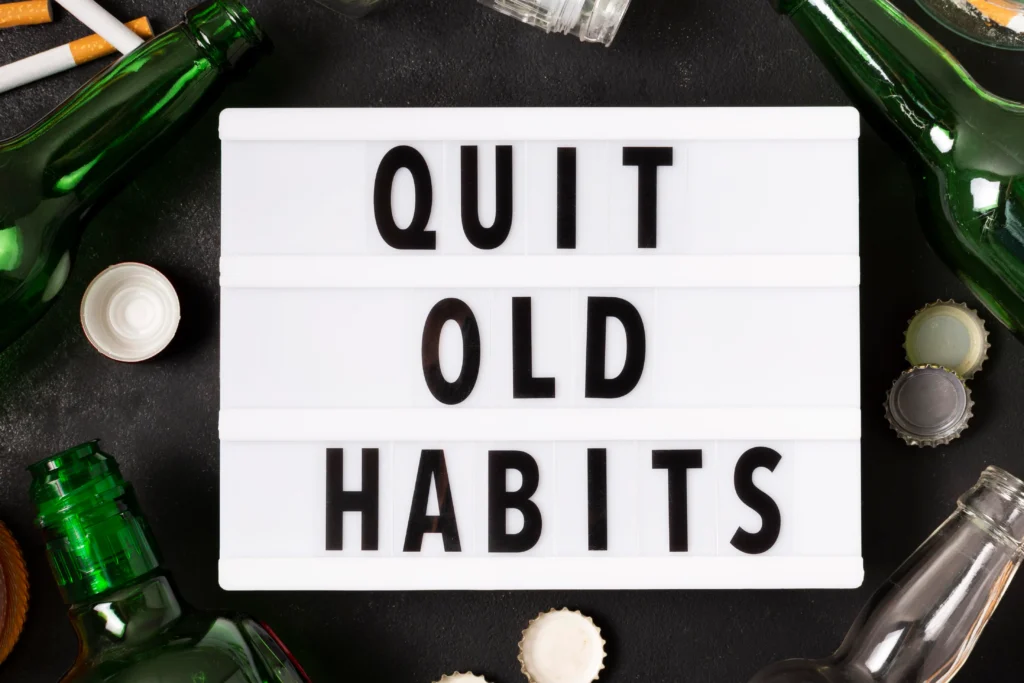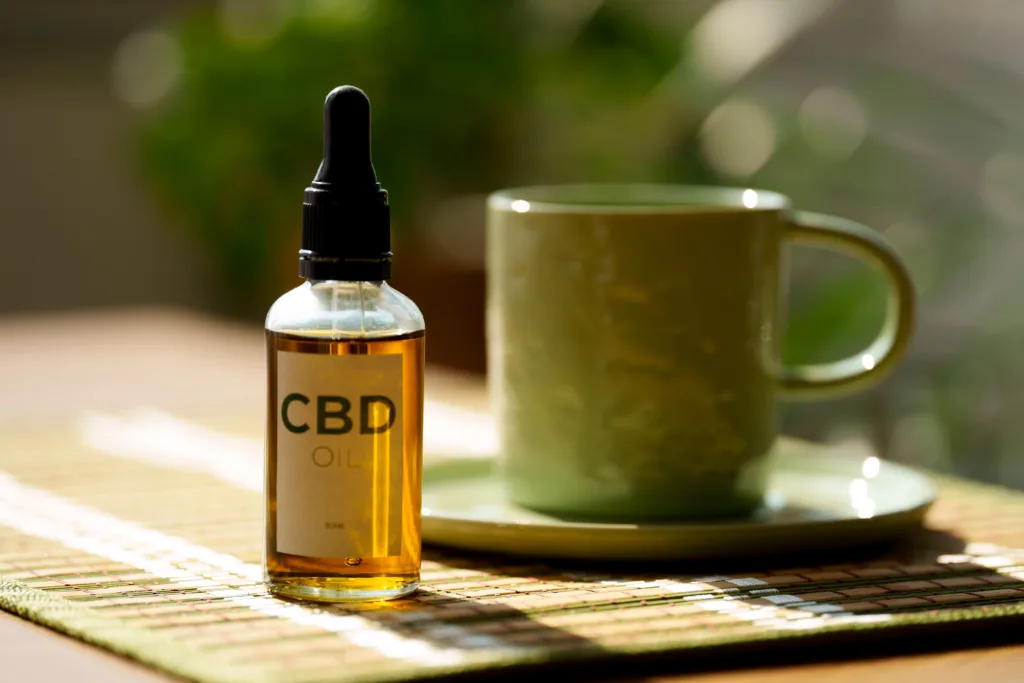Are you tired of feeling overwhelmed by anxiety and unsure of how to manage it? You’re not alone. Occasional feelings of unease are a normal part of life, but when stress becomes a constant companion, it’s time to take action.
Understanding anxiety is the first step toward relief. It’s a natural response to uncertainty, manifesting in both body and mind. By recognizing its signs and symptoms, you can begin to manage your mental health more effectively.
Key Takeaways
- Discover practical strategies to manage anxiety in the moment and long-term.
- Learn how acceptance can be a powerful step toward anxiety relief.
- Explore techniques from quick breathing exercises to lifestyle changes that reduce stress.
- Understand when self-help strategies are appropriate and when to seek professional support for your mental health.
- Customize a toolkit for managing anxiety to suit your needs.
Understanding Anxiety and Its Impact
Anxiety, as a natural response to stress, plays a significant role in our mental health. It’s a feeling of fear or worry that can stem from a combination of factors, including genetics, environment, and brain chemistry.
What Causes Anxiety?
Anxiety is triggered by complex interactions between your body‘s natural response to perceived threats, involving your brain chemistry, genetic predisposition, and environmental factors. As “Anxiety is your body’s natural response to stress,” it’s a normal reaction that can become a disorder when it’s persistent and overwhelming.
Common Symptoms to Recognize
Common symptoms of anxiety include an increased heart rate, rapid breathing, restlessness, and trouble concentrating. Anxiety can manifest differently in different people; while one person may experience a “butterfly feeling” in their stomach, another might have urges to poop, itching, panic attacks, or anxiety disorders like generalized disorder.
- Increased Heart Rate: A common physiological response where the heart beats faster due to stress or fear.
- Rapid Breathing: Often described as hyperventilation, this can lead to feelings of dizziness or lightheadedness.
- Restlessness: An inability to relax or sit still, often accompanied by a sense of unease.
- Trouble Concentrating: Difficulty focusing on tasks or making decisions, often due to racing thoughts.
- Panic Attacks: Sudden episodes of intense fear or discomfort that peak within minutes, including symptoms like heart palpitations and sweating.
- Physical Symptoms: Such as gastrointestinal issues, muscle tension, and fatigue, which can accompany anxiety.
The Power of Acceptance in Anxiety Relief
Embracing acceptance can be a powerful tool in managing anxiety, as it allows individuals to reframe their relationship with anxious thoughts and feelings. According to David H. Rosmarin, PhD, “When you worry about getting rid of your anxiety, you’re signaling your nervous system that you have even more to be anxious about. And that makes your anxiety worse.” This perspective may seem counterintuitive, but it highlights the potential benefits of acceptance in easing occasional anxiety.
Accepting anxiety rather than fighting it can be a more effective way to manage it. When we let anxiety run its course without resistance, it can actually decrease. Conversely, fighting anxiety can trigger a panic attack by activating the fight-or-flight response.
Why Fighting Anxiety Often Backfires
Attempting to suppress or eliminate anxious feelings often amplifies them, creating a cycle of increased stress and worry about the anxiety itself. This resistance can signal to the nervous system that there’s even more danger to worry about, potentially leading to a panic attack. By understanding this dynamic, individuals can begin to shift their approach from one of resistance to one of acknowledgment.
How to Practice Acceptance
The practice of acceptance involves acknowledging anxiety without judgment, recognizing it as a normal bodily response rather than something dangerous or shameful. Techniques for practicing acceptance include mindful awareness, self-compassion, and changing one’s relationship with anxious thoughts. This approach is supported by therapy methods like Acceptance and Commitment Therapy (ACT), which have helped many people reduce their anxiety symptoms.
Quick Techniques for Immediate Anxiety Relief
When anxiety strikes, it’s essential to have some quick techniques up your sleeve to regain control. These techniques can provide immediate relief, helping you manage anxiety in the moment.
Diaphragmatic Breathing Exercises
One effective technique is diaphragmatic breathing. To practice this, close your eyes and take a deep breath into your lungs, allowing your belly to poke out. Hold your breath for a couple of beats, then exhale slowly by tightening your abdominal muscles. This breathing technique activates your parasympathetic nervous system, calming your body‘s stress response.
Simple Stretches to Release Tension
Simple stretches can also help release physical tension associated with anxiety. Focus on areas like your jaw, neck, and shoulders, which commonly store tension. These stretches can be done discreetly, even at your desk or in a waiting room, helping you manage anxiety in various situations.
Reality Check Questions
Another helpful technique is to do a reality check by asking yourself a series of questions: On a scale of 1 to 100, how likely is it that the thing I’m anxious about will happen? Do I have good reasons to think something will go wrong? Is there a chance I’m overly worried? This helps challenge catastrophic thoughts and gain a more realistic perspective, which can help reduce anxiety.
| Technique | Description | Benefit |
|---|---|---|
| Diaphragmatic Breathing | Deep breathing into the lungs, holding, and slow exhalation | Activates parasympathetic nervous system, calming the body |
| Simple Stretches | Stretching jaw, neck, and shoulders | Releases physical tension, discreetly manageable |
| Reality Check Questions | Assessing likelihood and reasons for anxiety | Challenges catastrophic thoughts, provides realistic perspective |
Mind-Body Strategies to Calm Your Nervous System
When anxiety takes over, it’s crucial to have strategies that calm your nervous system. Mind-body techniques can help regulate your nervous system, providing relief from anxiety. These strategies work by addressing both the physical sensations and thought patterns associated with anxiety.
Guided Imagery for Comfort
Guided imagery is a powerful tool for creating mental sanctuaries that provide comfort and safety. By engaging all your senses, you can imagine peaceful settings in vivid detail, from the warmth of the sun on your skin to the sound of gentle waves. According to Lisa Henderson, a licensed professional counselor, “Use a guided imagery app or simply daydream on your own. A brief mental vacation can break the cycle of anxious thoughts.”
Redirecting Nervous Energy
Anxiety can be like a revving motor. To manage this energy, redirect it into a physical activity. For example, if you’re feeling worried, get up and walk or pace. Short bursts of activity can release anxious energy. Simple tasks like cleaning or taking a short walk outside can help discharge nervous energy and shift your focus away from anxious thoughts, promoting better mental health.
| Mind-Body Technique | Description | Benefits |
|---|---|---|
| Guided Imagery | Imagine peaceful settings in detail | Provides comfort, breaks anxious thought cycles |
| Redirecting Nervous Energy | Channel excess energy into physical activity | Releases anxious energy, shifts focus |
Lifestyle Changes for Long-Term Anxiety Relief
Sustainable lifestyle changes offer a promising path to lasting anxiety relief. By focusing on key areas such as physical activity, sleep hygiene, and nutrition, individuals can significantly reduce their baseline anxiety levels over time. These changes not only help manage anxiety but also contribute to overall health and well-being.
Physical Activity and Exercise Benefits
Regular physical activity is a powerful tool for managing anxiety. A 2021 study found that people with physically active lifestyles have about a 60% lower chance of developing anxiety symptoms. Exercise diverts attention from anxious thoughts and generates changes in brain chemistry, including the release of anti-anxiety neurotransmitters.
Sleep Hygiene Improvements
Improving sleep quality is crucial for anxiety management. The CDC recommends 7 or more hours of sleep per day. Establishing a consistent bedtime routine and creating an optimal sleep environment can significantly enhance sleep quality.
Nutrition and Hydration Considerations
Nutrition plays a critical role in anxiety levels. Low blood sugar, dehydration, and chemicals in processed foods can affect mood. A diet rich in omega-3 fatty acids and low in sugar can help reduce anxiety. Adequate hydration is also essential for maintaining healthy brain function.
| Lifestyle Factor | Impact on Anxiety |
|---|---|
| Regular Exercise | Reduces anxiety symptoms by 60% |
| Adequate Sleep | Improves mood and reduces anxiety |
| Balanced Nutrition | Stabilizes mood and reduces anxiety |
Harnessing the Power of Music and Language
You can harness the power of music and language to help manage anxiety in your daily life. Anxiety can be overwhelming, but there are unique ways to alleviate it. One effective approach is through the use of music and language, which can engage different parts of the brain and provide relief.
Creating a Calming Playlist
Creating a personalized playlist can be a therapeutic way to calm your nervous system during anxious moments. Research has shown that certain tempos, harmonies, and frequencies can influence your physiological state, reducing feelings of anxiety. For example, listening to calming music can slow down your heart rate and promote relaxation. By choosing music that you find comforting, you can create a powerful tool to help manage anxiety.
Language Switching Techniques
For those who speak multiple languages, switching languages can be a useful technique for managing anxiety. When you switch languages, a different part of the brain is activated, which can shift your focus away from anxious thoughts and emotions. This technique can create emotional distance from your feelings, providing a sense of relief. Alternatively, engaging in activities like playing an instrument or singing can also provide a cognitive shift and help alleviate anxiety.
| Technique | Description | Benefit |
|---|---|---|
| Creating a Calming Playlist | Selecting music that promotes relaxation | Reduces anxiety by slowing down heart rate |
| Language Switching | Switching to a non-native language | Creates emotional distance from anxious thoughts |
| Playing an Instrument | Engaging in musical activity | Provides distraction and emotional release |
Natural Remedies and Supplements for Anxiety
For many individuals, natural approaches offer a complementary path to alleviating anxiety symptoms. While these remedies may not replace professional treatment for severe anxiety disorders, they can be a valuable addition to a comprehensive management plan.
Herbal Options Like Chamomile
Chamomile has been studied for its potential in reducing anxiety. A 2016 randomized clinical trial involving people with a GAD diagnosis found that chamomile was safe long-term and significantly reduced anxiety symptoms. Researchers suggest that chamomile’s anti-anxiety properties may stem from the activity of a flavonoid called apigenin. You can incorporate chamomile into your routine through tea or supplements, but it’s essential to consult with a healthcare professional first.
Aromatherapy and Essential Oils
Aromatherapy is a holistic healing treatment that utilizes natural plant extracts and essential oils to promote overall well-being. Certain essential oils, such as lavender, bergamot, and ylang-ylang, are believed to have a calming effect on the mind and body. To use aromatherapy for anxiety, you can inhale these oils directly, use a diffuser, or apply them topically after proper dilution. As with any new therapy, it’s crucial to be aware of potential interactions with medications and to consult with a healthcare provider.
By exploring these natural remedies and supplements, individuals can take a proactive approach to managing their anxiety, potentially enhancing their overall health and well-being. As studies continue to emerge, the role of these natural approaches in therapy and treatment plans may also become more defined.
When to Seek Professional Help for Anxiety
Anxiety can be overwhelming, and there are times when self-help strategies aren’t enough to manage it effectively. If your anxiety is long-lasting and interferes with your daily life, you might be dealing with an anxiety disorder. Recognizing when to seek professional help is crucial for effective management and recovery.
Signs Your Anxiety Needs Medical Attention
It’s essential to watch out for signs that your anxiety requires medical attention. These include:
- Constant or nearly constant anxiety
- Anxiety that gets in the way of your daily activities, such as work or social life
- Anxiety about things that don’t actually threaten you
- Panic attacks
If you’re experiencing these symptoms, it’s time to consider seeking help from a mental health professional.
Types of Therapy and Treatment Options
There are several effective therapy and treatment options available for anxiety disorders. These include:
| Therapy Type | Description |
|---|---|
| Cognitive Behavioral Therapy (CBT) | Helps you identify and change negative thought patterns and behaviors |
| Exposure Therapy | Involves gradually exposing you to the feared object or situation |
| Acceptance and Commitment Therapy (ACT) | Focuses on accepting your thoughts and emotions while taking action towards valued life goals |
Medication is also a viable treatment option, which can help alleviate symptoms of anxiety. A doctor or a mental health professional can guide you on the best course of treatment.
Conclusion: Building Your Personal Anxiety Management Toolkit
Managing anxiety is a journey that requires the right tools and support, which we’ve outlined throughout this guide. To effectively manage anxiety, it’s crucial to build a personalized anxiety management toolkit that incorporates various strategies tailored to your specific needs.
You can start by identifying the techniques that work best for you in different situations and anxiety levels. This may include quick relief methods for acute anxiety or long-term practices for prevention. Consistency and patience are key, as managing anxiety is often a journey rather than a quick fix.
Involving supportive family members and friends in your anxiety management plan can create a network that understands and supports your needs. By tracking your progress over time, you can recognize improvements and adjust your strategies as needed. Additionally, having an emergency plan in place for severe anxiety episodes can provide reassurance and help you feel more in control.








